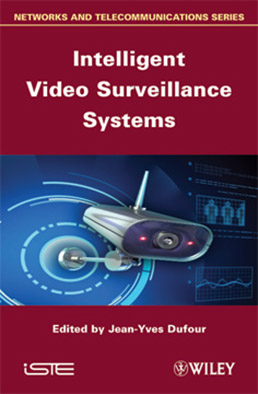
Belonging to the wider academic field of computer vision, video analytics has aroused a phenomenal surge of interest since the current millennium. Video analytics is intended to solve the problem of the incapability of exploiting video streams in real time for the purpose of detection or anticipation. It involves analyzing the videos using algorithms that detect and track objects of interest over time and that indicate the presence of events or suspect behavior involving these objects. The aims of this book are to highlight the operational attempts of video analytics, to identify possible driving forces behind potential evolutions in years to come, and above all to present the state of the art and the technological hurdles which have yet to be overcome. The need for video surveillance is introduced through two major applications (the security of rail transportation systems and a posteriori investigation).
The characteristics of the videos considered are presented through the cameras which enable capture and the compression methods which allow us to transport and store them. Technical topics are then discussed – the analysis of objects of interest (detection, tracking and recognition), “high-level” video analysis, which aims to give a semantic interpretation of the observed scene (events, behaviors, types of content). The book concludes with the problem of performance evaluation.
1. Image Processing: Overview and Perspectives, Henri Maître.
2. Focus on Railway Transport, Sébastien Ambellouis and Jean-Luc Bruyelle.
3. A Posteriori Analysis for Investigative Purposes, Denis Marraud, Benjamin Cépas, Jean-François Sulzer, Christianne Mulat and Florence Sèdes.
4. Video Surveillance Cameras, Cédric Le Barz and Thierry Lamarque.
5. Video Compression Formats, Marc Leny and Didier Nicholson.
6. Compressed Domain Analysis for Fast Activity Detection, Marc Leny.
7. Detection of Objects of Interest, Yoann Dhome, Bertrand Luvison, Thierry Chesnais, Rachid Belaroussi, Laurent Lucat, Mohamed Chaouch and Patrick Sayd.
8. Tracking of Objects of Interest in a Sequence of Images, Simona Maggio, Jean-Emmanuel Haugeard, Boris Meden, Bertrand Luvison, Romaric Audigier, Brice Burger and Quoc Cuong Pham.
9. Tracking Objects of Interest Through a Camera Network, Catherine Achard, Sébastien Ambellouis, Boris Meden, Sébastien Lefebvre and Dung Nghi Truong Cong.
10. Biometric Techniques Applied to Video Surveillance, Bernadette Dorizzi and Samuel Vinson.
11. Vehicle Recognition in Video Surveillance, Stéphane Herbin.
12. Activity Recognition, Bernard Boulay and François Bremond.
13. Unsupervised Methods for Activity Analysis and Detection of Abnormal Events, Rémi Emonet and Jean-Marc Odobez.
14. Data Mining in a Video Database, Luis Patino, Hamid Benhadda and François Brémond.
15. Analysis of Crowded Scenes in Video, Mikel Rodriguez, Josef Sivic and Ivan Laptev.
16. Detection of Visual Context, Hervé Le Borgne and Aymen Shabou.
17. Example of an Operational Evaluation Platform: PPSL, Stéphane Braudel.
18. Qualification and Evaluation of Performances, Bernard Boulay, Jean-François Goudou and François Bremond.
Jean-Yves Dufour is Head of the Vision Lab at Thales/CEA common research laboratory. Since early 2009, he has been running the video analytics joint laboratory of the innovation office of the Thales DSC division (Defense and Security C4I Systems). This laboratory is set up in partnership with the CEA-LIST (one of the top three academic research centers in France). In parallel to his professional activities, he teaches image processing at ISEN, Lille, France.